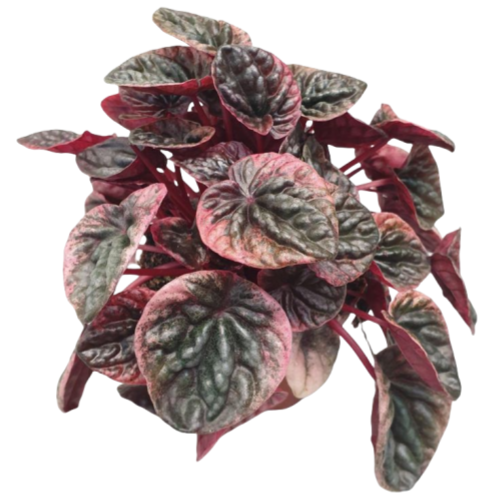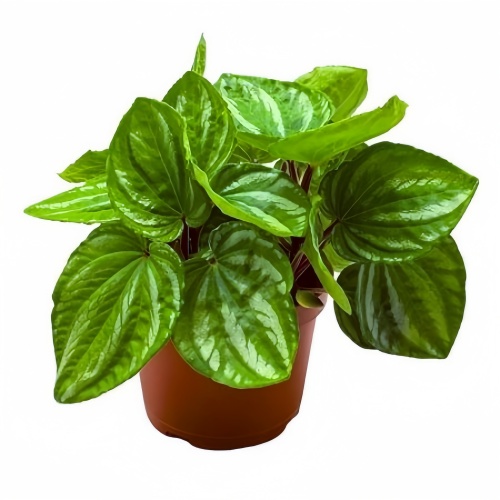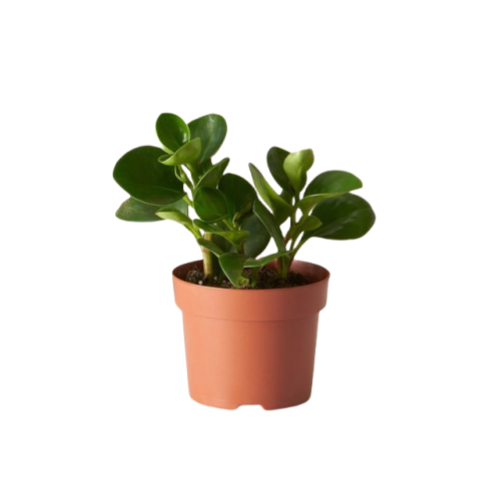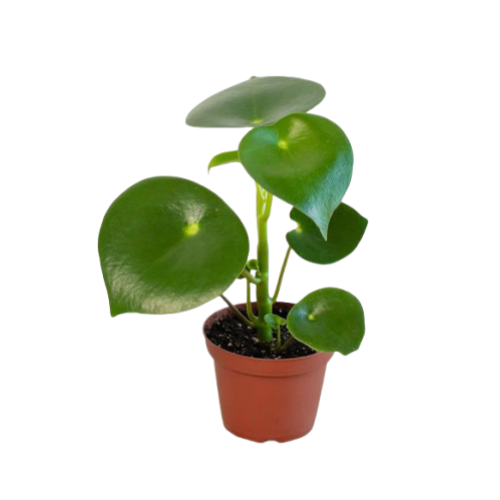Piper nigrum L.
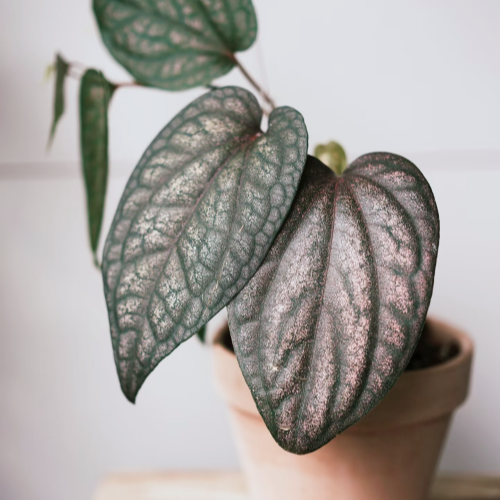
- Botanical Name: Piper nigrum L.
- Family Name: Piperaceae
- Stems: 2-8 Inch
- Temperature: 10℃~35℃
- Others: Semi-shade, high humidity, well-drained soil; avoid wind and dryness.
Overview
Product Description
Piper nigrum L.: Aesthetic Marvel and Cultivation Insights
Piper nigrum L.: The “Fashion Darling” of Nature
The leaves of Piper nigrum L. are highly admired for their unique texture and color. The leaves are ovate or lanceolate, with a thick and smooth texture that appears as if meticulously crafted, exuding a natural artistry. Typically, the leaf surface is a blend of dark purple and greenish-brown, presenting a distinctive matte metallic sheen, which is the origin of its name. Interspersed with these colors are grayish-white veins that create a textured, almost muscular appearance, adding an air of elegance and mystery.
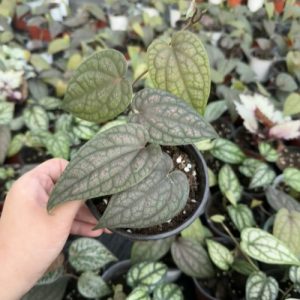
Piper nigrum L.
The veins are clearly visible, and the leaf edges are smooth or slightly wavy, lending a sense of fluidity to the leaves. The leaf stalks are short and often bright red, contrasting sharply with the green stems. The elongated stem nodes typically require support to grow upright, maintaining an elegant posture. Under light, Piper nigrum L. leaves display a unique lustrous metallic quality, as if nature and art have been perfectly combined, further enhancing its ornamental value.
A Guide to Growing Piper nigrum L.
Piper nigrum L.,, is a tropical climbing vine with specific environmental requirements for optimal growth. It thrives in warm, humid conditions with well-drained soil and ample sunlight. The ideal temperature range is 24°C to 30°C. The soil should be fertile and deep, with a pH between 5.5 and 7.0. While it prefers full sun, young plants need partial shade during the early stages.
Piper nigrum L. requires regular watering to maintain soil moisture but is sensitive to waterlogging, which can cause root rot. Additionally, it needs support structures like stakes or trellises for its vines to climb and is best grown in a sheltered area to protect it from strong winds.
When planting Piper nigrum L., choose a location that is sheltered, sunny, and well-drained, ideally in a tropical or subtropical climate. Propagation is typically done through cuttings, selecting healthy sections with aerial roots and leaves. Support structures such as wooden stakes or grids should be provided to assist the vine’s growth. During the growing season, apply organic or chemical fertilizers regularly to meet the plant’s nutritional needs.
Regularly inspect the plants for pests and diseases, and use biological pesticides for control. Pruning should be done after fruit harvest, retaining two-thirds of the plant to encourage growth in the following year. The fruit, which turns from green to red when ripe, can be harvested and dried to produce black pepper. Increase irrigation during dry seasons but reduce it in winter, relying on natural rainfall to sustain growth.





